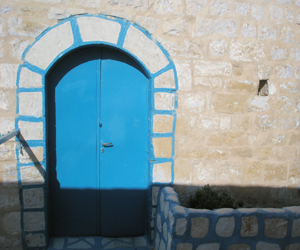Looking Back at Safed in the 16th Century
While Safed today is a beautiful place, with breathtaking scenery and talented artists, it has ebbed and flowed a great deal throughout time. Six hundred years ago, Safed was a booming location for Torah scholars, spiritual leaders and religious thinkers. Where did these people come from? Why did they come to Safed? How have they influenced the people living in Safed today?
Spain Prior to 1492
During the 11th-15th centuries, Spain was one of the greatest centers for Jewish life. This community produced such greats as Maimonides, Judah Halevi and Solomon Ibn Gavirol. Jews felt safe during this time period and produced great works of all sorts. Unfortunately, as Christian rule took over, the Jewish community began to change. By the last decade of the 15th century, the conditions became intolerable for the Spanish Jews. Many fled Spain, and those who remained were expelled in 1492. The community there vanished and over 150,000 people were forced to leave.
Why Safed?
Many of the Jews at this time, who had lived in Spain, were attracted to the city of Safed because of the Zohar. The Zohar was a book of Kabbalistic ideas and one of the holiest books of the Jewish mystics. It was first discovered in Spain in the 13th century. It was supposedly written by Simon Bar Yochai in a cave in Peki'in during the 12th century. Some Jews expelled from Spain began to direct their thoughts towards Safed, since the Upper Galil was the birthplace of the Zohar's alleged author.
These great thinkers came to Safed and formed a Jewish community together. Within a short amount of time, in the 16th century, Safed went from a small community with three synagogues and one Talmudic study house to a center with 18 study houses and 21 synagogues by the end of the century!
Safed Downhill Again
While Safed flourished during this time, it was soon to go into disrepair again. Many of the new immigrants from Spain brought with them a talent for cloth weaving and manufacturing. While they were successful for awhile, they could not compete once Europe started to produce their own cloth. Their main industry failed, and this, compounded by natural problems in Safed such as drought, epidemics and security issues, led to a downturn in life there. By the end of the 16th century, Safed was, again, in decline. It had, however enjoyed quite a hay day for a brief while during the 16th century; and it would become a great center of Jewish thought and art again in the future.

